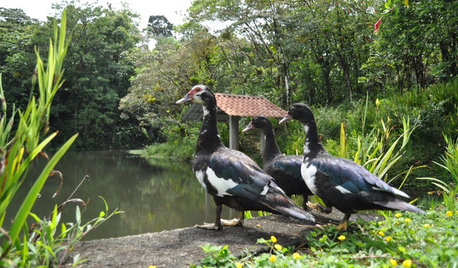C. Gigantea-More Research on the Way!
susanlynne48
18 years ago
Related Stories

TRADITIONAL ARCHITECTUREHow to Research Your Home's History
Learn what your house looked like in a previous life to make updates that fit — or just for fun
Full Story
HOME TECHNew TV Remote Controls Promise to Do More — Without the Struggle
Dim your lights, set up user profiles and discover a remote you can't lose. Welcome to the latest and greatest way to change the channel
Full Story
EVENTSSee Frank Lloyd Wright Treasures and More at This Spring House Walk
Celebrate the birth of modern architecture with a spring tour of Chicago-area Frank Lloyd Wright homes this May
Full Story
LANDSCAPE DESIGNNatural Swimming Pools: More Beauty, No Chemicals
Keep your skin and the environment healthy with a pool that cleans itself, naturally
Full Story
FEEL-GOOD HOMEThe Question That Can Make You Love Your Home More
Change your relationship with your house for the better by focusing on the answer to something designers often ask
Full Story
EARTH DAY5 Ideas for a More Earth-Friendly Garden
Consider increasing the size of garden beds, filtering rainwater and using plants to reduce energy use
Full Story
INSIDE HOUZZHouzz Survey: See the Latest Benchmarks on Remodeling Costs and More
The annual Houzz & Home survey reveals what you can expect to pay for a renovation project and how long it may take
Full Story
GREAT HOME PROJECTSHow to Add Toe Kick Drawers for More Storage
Great project: Install low-lying drawers in your kitchen or bath to hold step stools, pet bowls, linens and more
Full Story
REMODELING GUIDESLaminate Floors: Get the Look of Wood (and More) for Less
See what goes into laminate flooring and why you just might want to choose it
Full Story
LIFEYou Said It: ‘The Birds Will Thank You’ and More Houzz Quotables
Design advice, inspiration and observations that struck a chord this week
Full Story





keiko2
susanlynne48Original Author
Related Professionals
Bridgetown Landscape Architects & Landscape Designers · Garden City Landscape Architects & Landscape Designers · Horsham Landscape Architects & Landscape Designers · New Mexico Landscape Architects & Landscape Designers · Mason Landscape Contractors · Nutley Landscape Contractors · Palatine Landscape Contractors · Woodburn Landscape Contractors · Irvington Landscape Contractors · Barrington General Contractors · Converse General Contractors · Lakewood General Contractors · Maple Heights General Contractors · Spartanburg Siding & Exteriors · West Bloomfield Township Siding & Exteriorskeiko2
susanlynne48Original Author
keiko2
susanlynne48Original Author
keiko2
susanlynne48Original Author